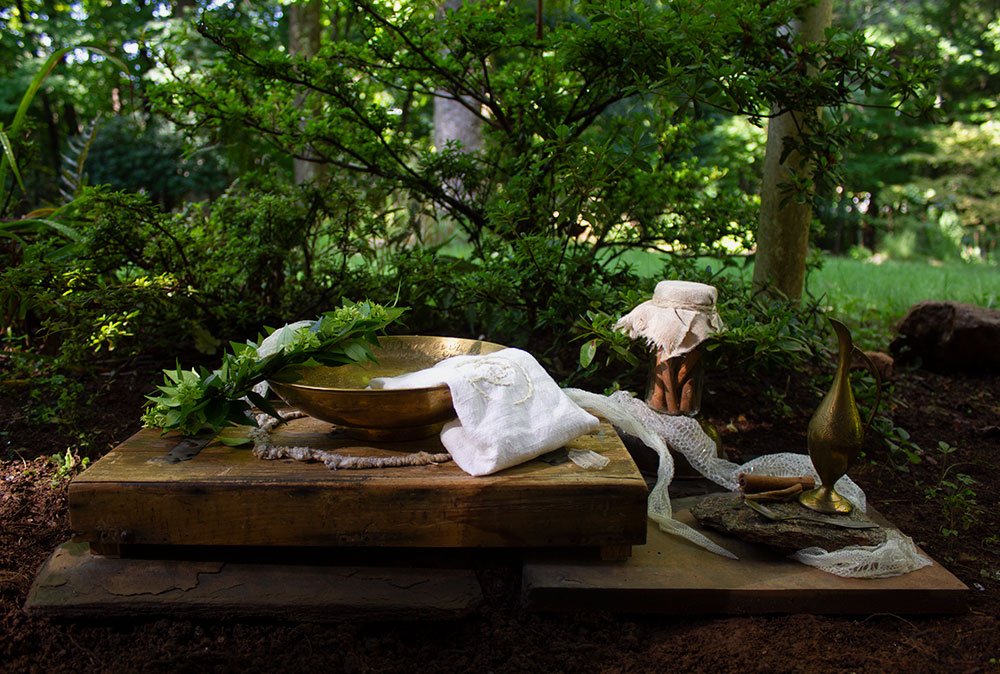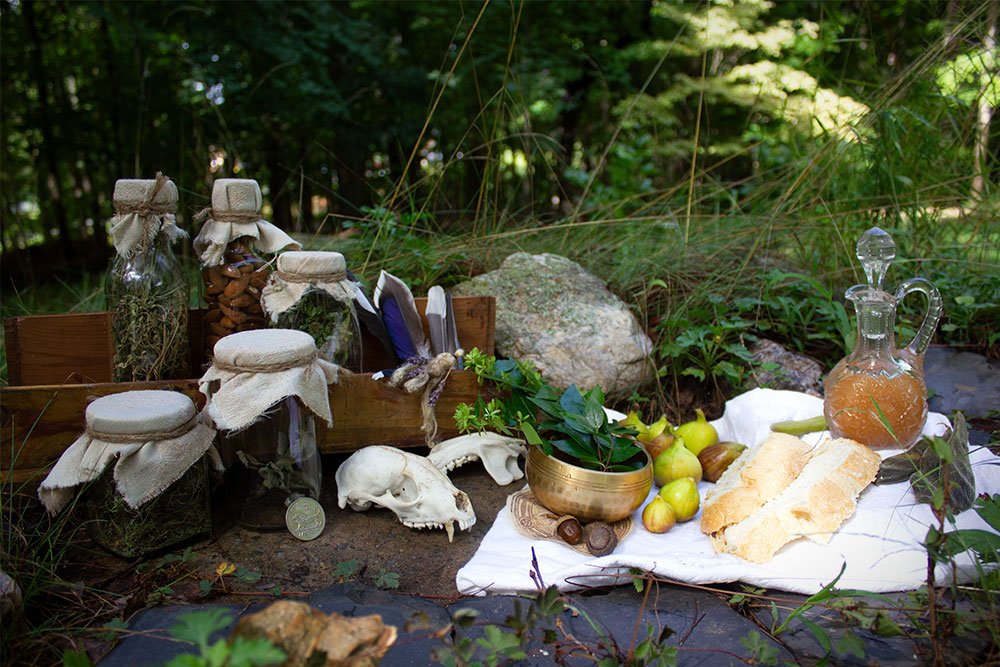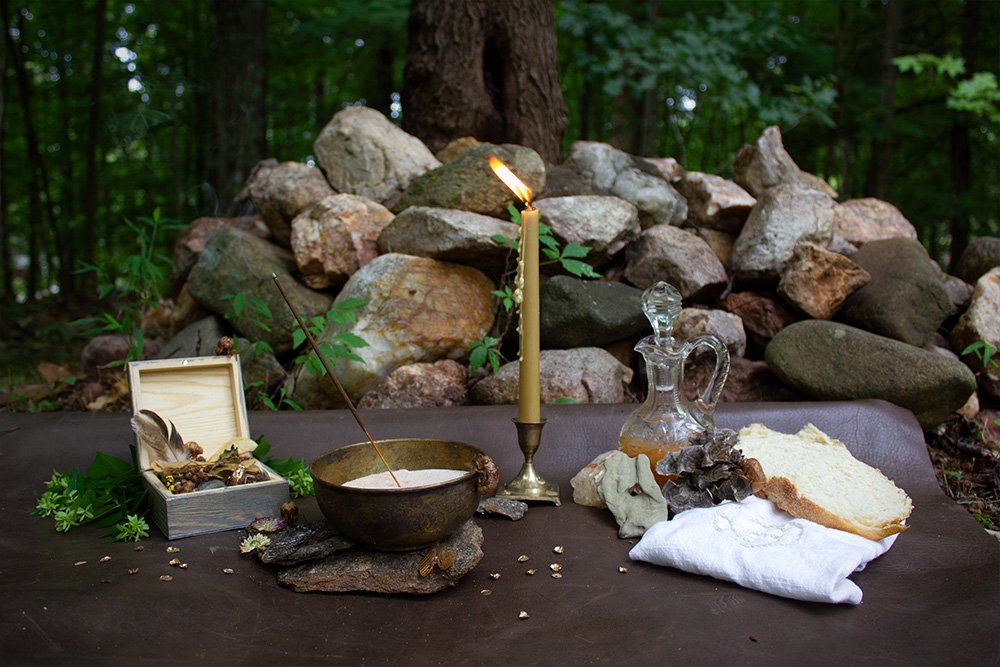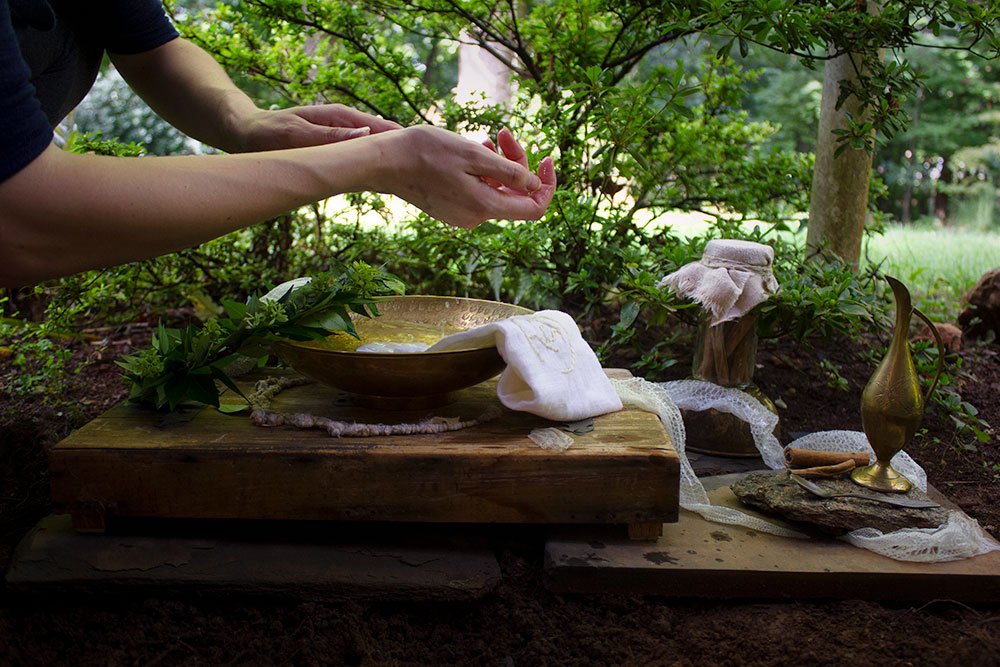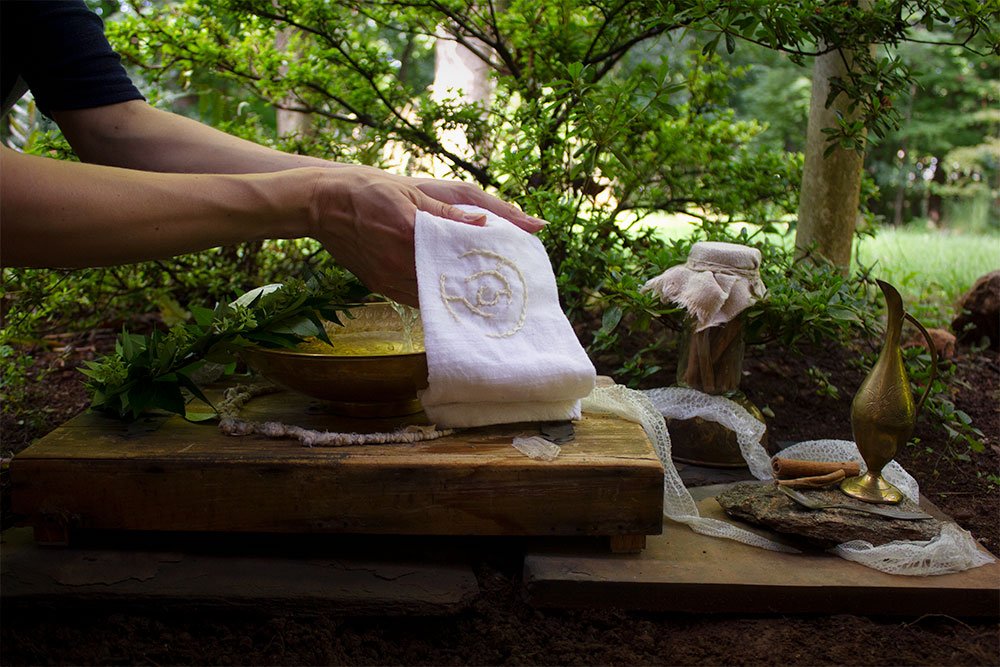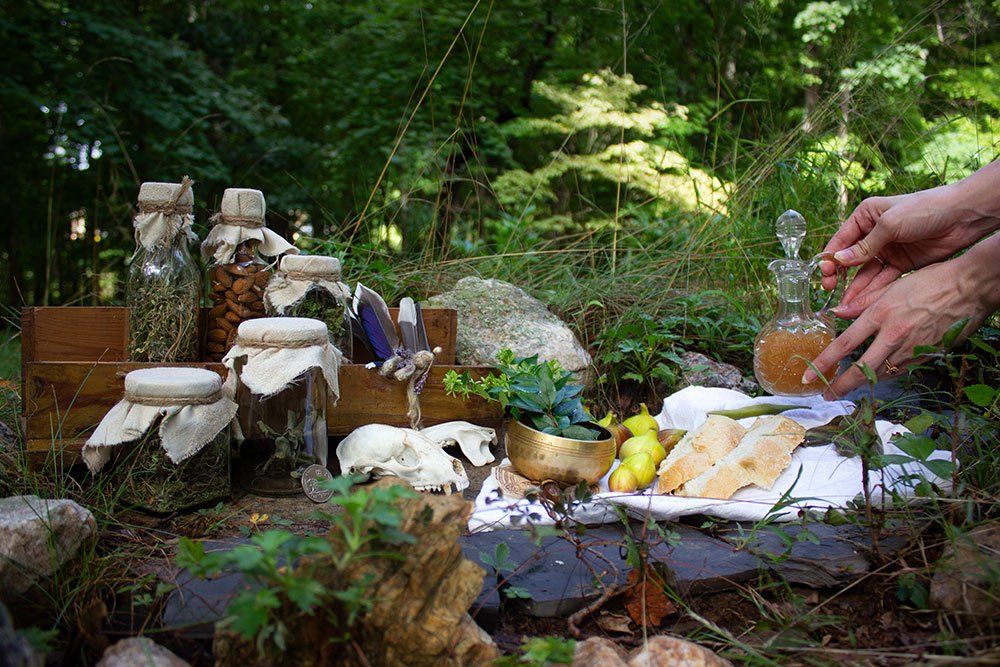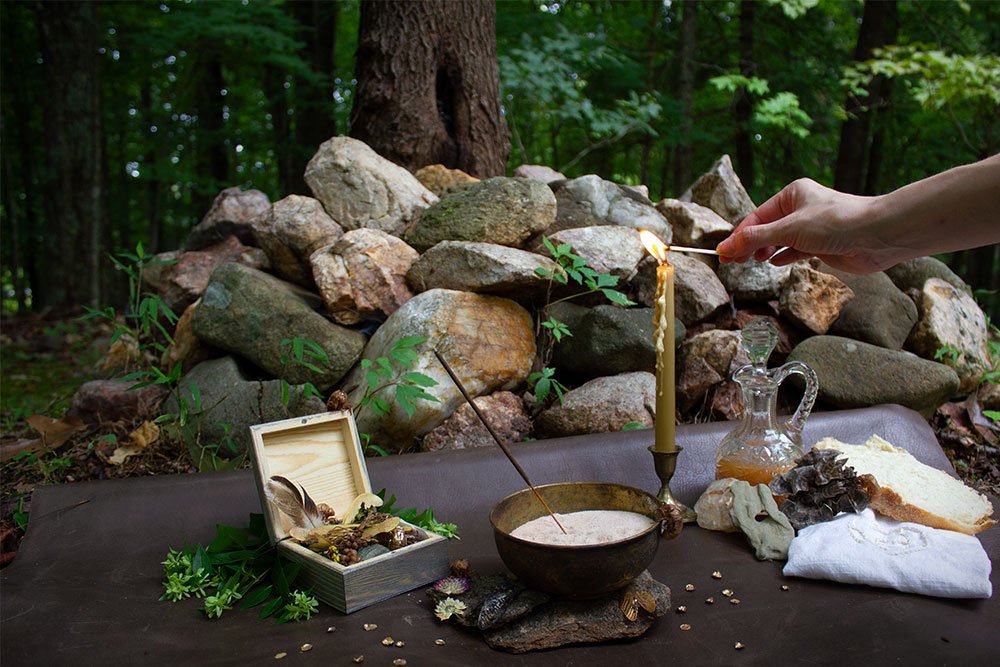Reclamation of Ritual
Journeying to Reclame Ritual
Mar 9
Reclamation of Ritual is a series of assemblage altars photographed. Photos of these altars were commissioned by Exponent II magazine for their Fall 2021 issue.
It was an honor to be able to respond to @_erika_barrett_'s article on Detokenizing Heavenly Mother. This article spoke to me and, after reading it, I knew it was the perfect excuse I needed to create the altars that had been calling me for months. After creating my God the Mother tryptic, this article pushed me to go further outside my comfort zone and create something even more raw, powerful, substantial. It invited me to work deeper with symbolism, explore my own relationship with communing with the Divine, and listened to what authentically called to me in a religious and artistic fashion.
While working on multiple portraits of God the Mother, I was able to deeply immerse myself in information, symbolism, lore, and practices revolving around the Divine Feminine. As I worked on these portraits I felt a clear call to create my own altar and explore a connection to a female deity, one my church claims to believe in. This felt both extremely blasphemous and absolutely necessary.
As I brainstormed and sorted through the different symbols and items that I wanted to include in my altar, I quickly realized that one altar was not going to be enough. I listed, sifted, and grouped objects I felt called to use until I found three distinct themes arise. I had grouped together a cleansing/preparatory altar, an offerings altar, and a prayer/requesting altar. Realizing that these altars mirrored biblical ceremonies, I leaned into it. I focused on biblical and Mormon history with these altars, giving a nod to ritual of the past as I seized it for myself and made it my own. An example of this can be seen in the cleansing altar with my inclusion of cinnamon sticks. Cinnamon here is a nod to Mormon history where the first anointings were done with sweet cinnamon oil. In this altar I also included a labyrinth stitched on the hand cloth, a snake shed, and a crown of flowers to tie biblical traditions to God the Mother.
Reclamation of Ritual - Altar 1 - Full
While reflecting on creating altars to God the Mother and on the importance of each altar, I more deeply recognized a need to prepare before engaging the divine in either ritual or in prayer. This need to prepare can be seen in rituals across cultures and practices. It may look different for each culture but it is a fairly standard practice to prepare our bodies and our minds before seeking enlightenment. Recognizing this pattern helped to validate the need for a preparatory/cleansing altar. (Thanks to @pageturnerstudios and @nightingalesong for their @dialoguejournal Sunday School lesson on Word-less-ness of Wisdom for connecting some of the dots on the importance of preparing for enlightenment.)
To build an altar for cleansing and preparation I read of the temple ceremonies in the Old testament regarding cleansing and anointings and the symbolism behind each step. Afterward, I studied how the initial rituals for the initiatory were created in early Mormon history. I took note of the changes that they made because of the limited tools they had available. I reread about Ashura, her history in the Bible, and early practices devoted to her.
As I took notes I debated about how much I should replicate ancient practices and how much I should lean into creating my own. Eventually I settled on a blend of the two. I took from old rituals what felt relevant, necessary to this altar, and added what seemed most fitting. In this altar the biggest inclusion was the snake shed. This piece was crucial. Not only does the serpent represent The Divine Feminine, It also represented leaving the external part of myself, the superficial part, at this altar and proceeding forward to the other altars with a more authentic self.
Reclamation of Ritual - Altar 2 - Full
The second altar for offerings proved to be the most difficult of the altars because of what I felt was critical to include. I wasn’t sure how I was going to find and include what felt essential but I also knew that I needed to have those things in order to best represent what I felt called to. As I gathered basic items, dyed and sewed cloths, and waited for figs to ripen, I found that the more challenging things found their way to me.
One challenging item to procure was related to my desire to include the symbolism of a lioness in some form. It felt important to include the symbols of a living tree, serpents, and lionness with my altars. Two of those options were easy enough to accomplish but finding a lioness figure was challenging. In my endless google searching, I found a coin with a lion on it. I loved it because it included a menorah (another symbol of Asherah) but wanted a more feminine nod than a male lion. I purchased the coin, it still had value in its symbolism, but kept an eye out for a secondary option to include as well. It was while waiting for the figs on my mother and father-in-law's trees to ripen that a bobcat skull was found and gifted to me by a dear friend. This was perfect. It was a symbol that not only represented the Feminine Divine but also would be personalized by my area. It was one of the most beautiful offerings on this altar.
With this altar, it felt crucial that a proper offering of sincerity should be given before approaching Deity. With this altar, I offered up pieces of myself. I attempted to provide expressions of gratitude as well as offerings that showed my understanding and deep respect for God the Mother. With offerings from my garden, from my woods, from family, and from gifts from friends I arranged the items that felt most crucial to include. These offerings beautifully represented pieces of my community and tied me to not only Heavenly Mother but also to those who had aided in this creation.
Reclamation of Ritual - Altar 3 - Full
It was crucial for me to prepare myself, as well as the altars previously done, before assembling the third altar. On this altar, I placed semblances of what was placed in the Holy of Holies. I included incense (made specifically as an offering to Ashera), a candle, and a food and drink offering. I also placed things that I hoped for when communing with God the Mother. I placed cicadas for change, growth, rebirth. I placed a hag stone, one of my most prized possessions, for clarity and insight. This altar was my favorite to work on and felt the most rewarding to complete.
Creating this third altar felt taboo. Often when discussing Heavenly Mother people belonging to the Church of Jesus Christ of Latter-day Saints will quote Gordon B. Hinckley's announcement that we are not to pray to Her. He claims that Jesus set the example for how to pray and those prayers were solely addressed to God the Father. When I first set out on this journey I began by researching that specific claim. I discovered that Elohim is a pleural noun. I took this word choice to refer to both Heavenly Mother and Father based on what I know of early Canaanite traditions and beliefs, items found in temples, and more research into the Divine Feminine in the bible. In other places, however, the word used by Jesus in the bible is "pater." This is typically translated as "father" but I wondered if it ever had use as a pleural noun to refer to both parents. As I researched and read I found that pater has historically been used as a singular noun for Father and occasionally as a plural noun for parents in ancient literature. On top of all this, the journal of discourses has many discussions on how God the Mother and Father are one, how there is no father with children without a mother.
I decided to act on the scripture found in D&C 1: 25-28. I trusted that if this was the wrong path, I'd be led to know it and would change my course. I also trusted that by "[seeking] wisdom" I "might be instructed." Seeing as Wisdom was one of the symbols that Asherah was referred to in the bible, I took this as a sign to proceed forward and reclaim my own voice and my own path when it came to prayer. If we pray to the Father through his son, why would praying to the Mother through her son be any different? With that information, I built my altar.
Reclamation of Ritual - Altars 1-3 - Engaging
As I photographed the first altar I found it to be visually beautiful but also lacking. Inspiration from women to reclaim and reimagine ritual, notably from Sue Monk Kidd and Claudia Bushman, had been tickling my brain for months. In these final pieces, I worked to reclaim ritual by including myself in the photos interacting with each altar. This created more dynamic images in which the altars and rituals come to life rather than just being static, representational images that simply reflect on symbols and their importance. Giving myself permission to engage in ritual as a member of a male-centric religion was freeing. I allowed myself to intuitively, naturally offer what was in my heart and receive answers directly from God herself. I gave myself permission to approach Deity and to interact with Her in ways that were both ancient and that felt authentic. I had taken cues from the beginning of the Church’s restoration and used what I had available, allowing myself to reimagine and rework ancient rites to fit my current time and situation. I boldly explored ritual, my place in it, Heavenly Mother, and her history, while letting go of fear and perceived impropriety that often surrounds discussing or portraying Her. This work was a part of me reclaiming a piece of the Feminine Divine — reclaiming relationship, my own spiritual identity, sorting out symbolism — and allowing intuition to guide the process. Tying in Mormon, Biblical, and ritual history to create altars unique to my background and person to create a true offering of myself.

